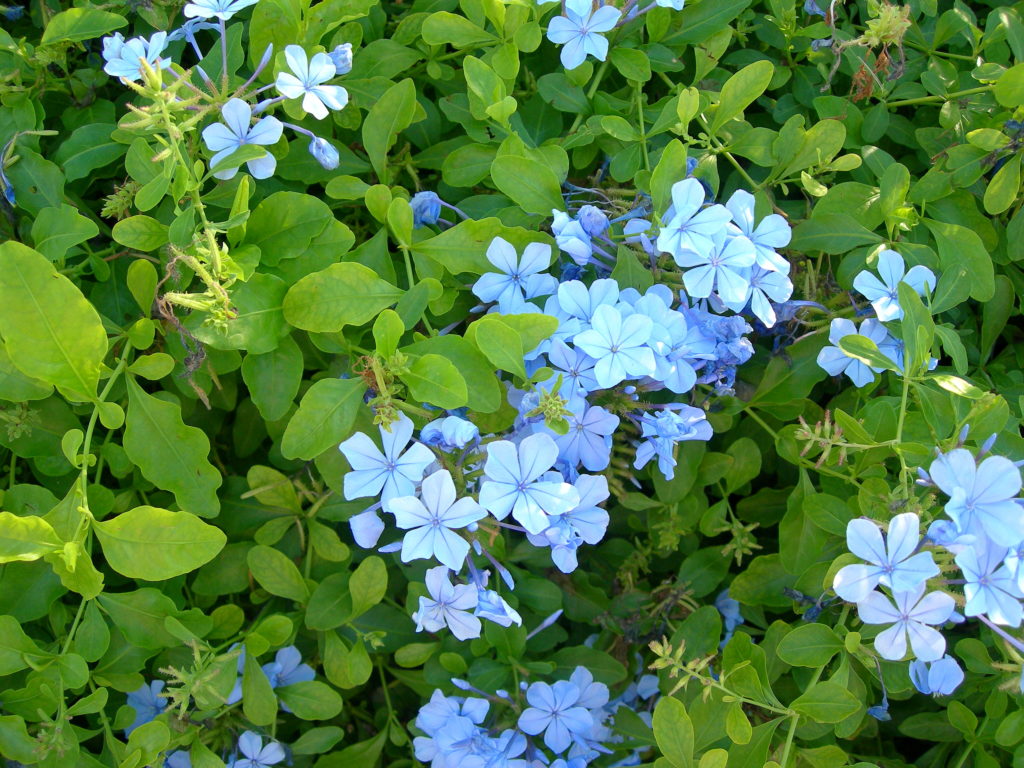
Dear Carol, I have a question about pruning plumbago shrubs. We have massive clusters of bushes that are about one year old now. Should I prune plumbago way back (using your 30% rule) now to promote flowers and make them a little less unruly looking? I’ve been “trimming” them as they grew huge shoots but had not really pruned them.
A: Plumbago is much prized for its flowers that appear throughout most of the year. The flowers are held in loose clusters above the foliage on new growth, and the color is a true blue that ranges from light sky blue to deep royal blue; there is also a white variety. Seeds are readily produced and often hitch a ride with humans or pets via the short, sticky burs covering the capsule.
It is an evergreen shrub with leaves that are up to 2 inches long, oblong, spatula-shaped, a medium to yellow-green color with small ear-like projections at the base. The branches grow in long, eventually arching form, making a mature specimen large and rounded.
Large mounding plants such as Plumbago are often challenging to place and manage in the landscape. They tend to be fast-growing, a good thing, but can quickly out-grow their assigned space. Plumbago is no exception; it can grow to 8 to 10 feet tall and 6 to 10 feet wide and pruning plumbago is an art.
Fortunately or not, Plumbago is very prunable and is often severely sheared into geometric shapes. This shearing eventually causes an unattractive brown stick-like habit underneath an incomplete shell of green leaves. It also reduces the plants’ usable landscape lifespan to 5 to 7 years.
Plumbago only requires pruning to control its size. Flowering is dependable without pruning and tends to cycle; the blooms appear less often in the hot, rainy summer, or cold winter. The 30% rule is an excellent place to start pruning; remove by hand only the branched needed to keep the plant inbounds.
In recent years, a new pest, Chilli Thrips, has invaded and finds Plumbago very attractive; unfortunately, the feeding of Chilli Thrips can reduce flowering. The tiny insect prefers to feed on new growth, sucking the juices out of the plant. The damage appears as bronze or brown leaves and flowers, or the leaves may be contorted, and the flower buds fall from the plumbago plant unopened.
Currently, the best control for Chilli Thrips is the use of pesticides if the damage is severe. Do inspect the plants if thrips are suspected. Some natural enemies feed on thrips and keep the pest numbers low. If the plants look good, leave the beneficial insects alone to do their job. If a pesticide application is used, it is essential when using pesticides to alternate types to prevent the development of resistance in the pest population. For homeowners, products containing neem oil are one choice for control. As with all pesticides, be sure to read and follow all label instructions.
This column first appeared in the Treasure Coast Newspapers.
Leave a Reply